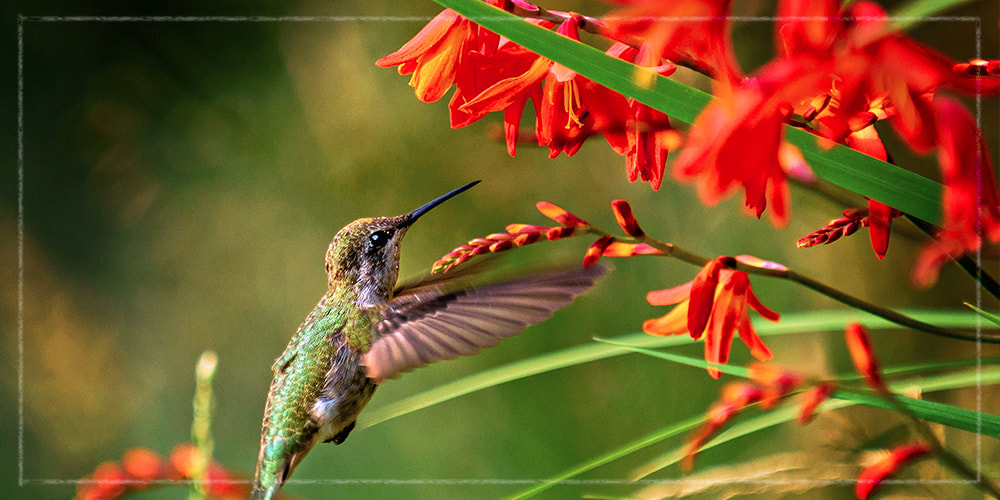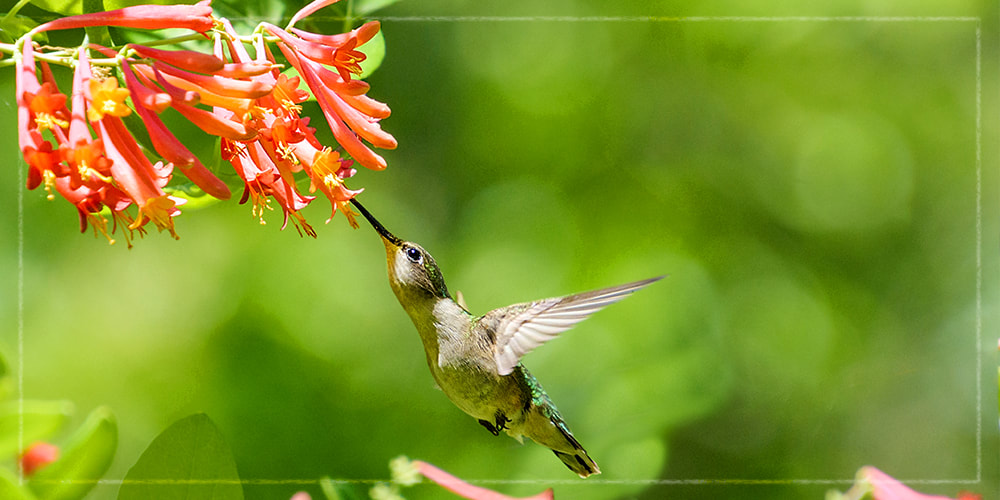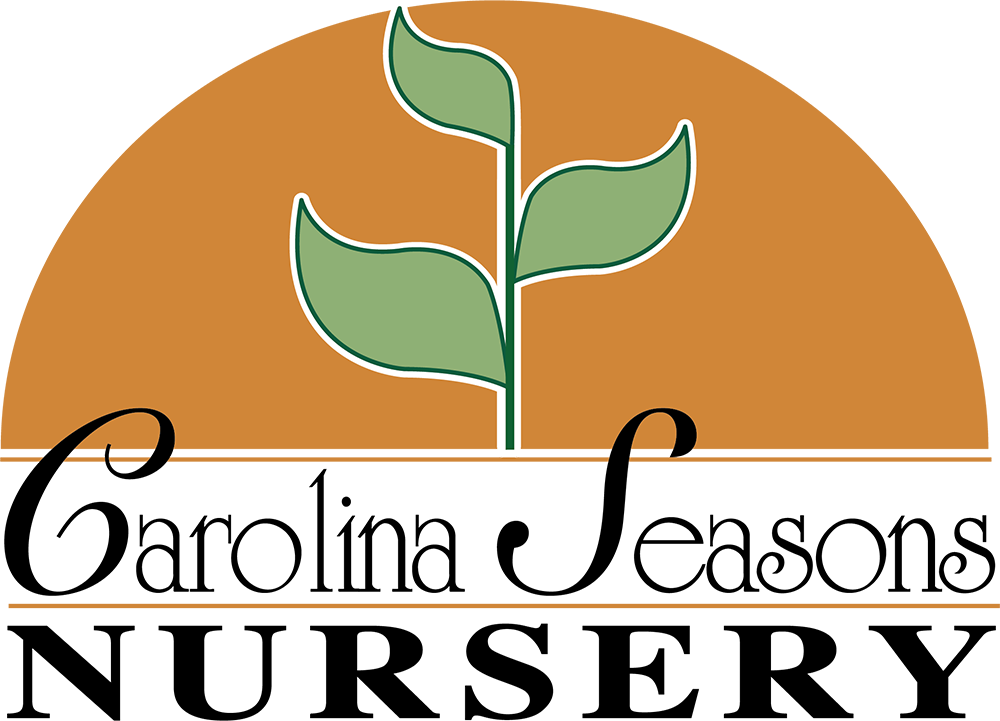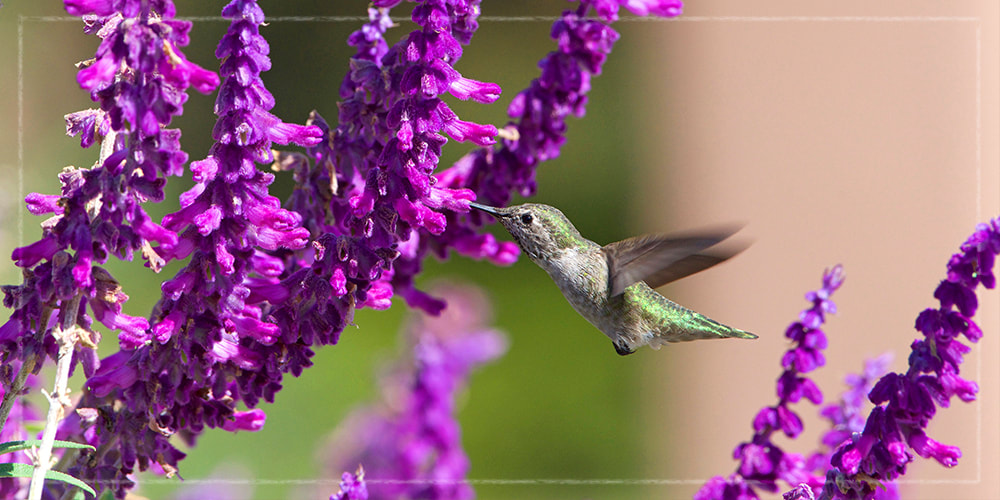Hummingbirds are one of the highlights of summer. Their vibrant colors, fluttering wings, and adorable noises are captivating. They’re very assertive little birds, and it can be quite funny to watch them chase each other around!
Hanging up a hummingbird feeder with fresh nectar is a great way to provide them with food, but you can also add plants to your yard that they’ll love as well. This will give them multiple food sources, so they don’t have to fight over your feeder.
Here are six flowering plants that grow well in Greenville, NC which are exceptionally popular with hummingbirds!
Salvia
Hummingbirds love Salvia because it has a high nectar content compared to some other flowers. They also have deep tubular flowers, perfect for hummingbirds’ long beaks. Salvia guaranitica ‘Black and Blue’, Salvia leucantha, and Salvia microphylla’ Hot Lips’ are all particularly popular with hummingbirds. Typically, red flowers are the easiest for hummingbirds to see, but they don’t seem to have much trouble finding the purple and pink ones.
Some types of Salvia can grow up to 5 feet tall and equally as wide, so make sure they have the space they need. This plant thrives best when planted in a full sun location.

Crocosmia
Crocosmia Lucifer, with its bright red flowers, is also very attractive for hummingbirds. Crocosmia’s exotic-looking flowers are born on tall, wiry stems, above long, sword-like leaves.
Crocosmia is a perennial here, but it can take a couple of years to get established and produce lots of flowers. They’ll thrive in a sunny spot, though a bit of dappled shade in the afternoons can help the flowers last a little longer. They’re a great companion plant for daylilies or ornamental grasses.
Vermillionaire Cuphea
Cuphea ‘Vermillionaire’ is another bright red tubular flower that hummingbirds love. The flowers and plants are a little smaller, maxing out at about 2 feet tall and wide. They bloom all summer long and are covered in their unique little flowers.
This Cuphea variety works well in borders, planters, and pots. It is very heat-tolerant and will flower best in a full sun location.

Monarda
Better known as Bee Balm, Monarda is a hummingbird magnet. This North Carolina native plant will have the hummingbirds flocking to your yard with its spiky clusters of vibrant flowers. Monarda is also an essential plant for native bee populations, so there’s a double bonus to planting it.
Monarda is a member of the mint family, and you can make delicious tea from the leaves and flowers. It’s also a pretty low-maintenance plant. Monarda does like lots of sun, but it will benefit from some dappled shade in the afternoon’s heat. It can grow up to 4′ tall and nearly as wide.
Buddleia
Also known as Butterfly Bush, Buddleia will have your yard humming with pollinators. Butterflies, bees, and hummingbirds love the long trusses of tiny flowers. This unique-looking shrub is definitely eye-catching, and it’s semi-evergreen here in NC.
Buddleia needs space; it can grow up to 6-10 feet tall and just as wide. Some newer varieties, like the Pugster(R) series, stay low. They need full sun to flower best. Unfortunately, some varieties of Buddleia are considered invasive in some states. To best protect other native species, it’s important to deadhead Buddleia each fall so that it doesn’t go to seed and spread. This plant blooms on new wood, so it’s best to cut it back hard every spring to encourage profuse blooming.

Coral Honeysuckle
This native vine produces clusters of tubular red blooms that hummingbirds love. Compared to the invasive japanese honeysuckle, the one with yellow and white flowers, this one grows much less aggressively. It is drought tolerant once established and tolerates salt, so it works well for coastal gardeners. The nectar is edible by humans and in USDA Zone 8 and warmer, it is reportedly evergreen.
Adding just a few of these plants to your Greenville yard will make your yard a haven for hummingbirds, butterflies, and bees. Having these plants around will also ensure the hummingbirds have another buffet open if they happen to drain your feeder before you get a chance to make new nectar.

